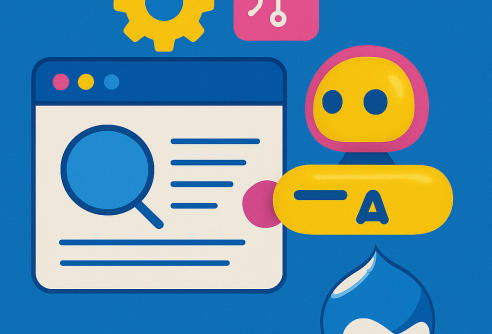Ten tips for Drupal 10
When it comes to web development, there are a lot of different content management systems (CMS) to choose from. But if you’re looking for a platform that is both flexible and scalable, Drupal 10 is a great option.
Drupal is an open source content management system (CMS) that is used by some of the biggest brands in the world, including the likes of Coca-Cola, Tesla, and General Electric.
While Drupal can be used for small websites, it really comes into its own when used for large and complex websites. That’s because Drupal is built on a modular framework, which means that it can be easily extended with new functionality as and when required.
So, if you’re thinking of using Drupal for your next web development project, here are 10 best practices that you should follow:
1. Keep your core and contributed modules up to date
One of the most important things to do when using Drupal is to keep your core and contributed modules up to date. By keeping your modules up to date, you’ll be able to benefit from the latest security and bug fixes.
2. Use a secure password
When creating a password for your Drupal site, make sure to use a strong and secure password. A strong password should be at least 8 characters long and should include a mix of letters, numbers, and symbols.
3. Use a security plugin
There are a number of security plugins available for Drupal, which can help to secure your website against common attacks. Some of the most popular security plugins for Drupal include the likes of Security Review and Paranoia.
4. Delete unused modules
If you have modules installed on your Drupal website that you’re not using, then it’s a good idea to delete them. By deleting unused modules, you’ll be able to reduce the number of potential vulnerabilities on your website.
5. Use a unique username
When creating a username for your Drupal website, make sure to use a unique username that is not easily guessed. A good way to create a unique username is to use a combination of letters and numbers.
6. Use two-factor authentication
If your Drupal website offers users the ability to log in, then you should consider using two-factor authentication. Two-factor authentication adds an extra layer of security to your website by requiring users to enter a code that is sent to their mobile phone.
7. Use HTTPS
If your Drupal website doesn’t use HTTPS, then you should consider switching to HTTPS. HTTPS is a more secure version of HTTP, which encrypts all data that is sent between the user and the website.
8. Use a content delivery network
If your Drupal website gets a lot of traffic, then you should consider using a content delivery network (CDN). A CDN is a network of servers that deliver content to users based on their location.
9. Use a caching plugin
If your Drupal website is slow, then you should consider using a caching plugin. Caching plugins create a static version of your website, which can be served to users much faster than the dynamic version.
10. Use a performance plugin
There are a number of performance plugins available for Drupal, which can help to speed up your website. Some of the most popular performance plugins for Drupal include the likes of Varnish and Memcached.
If you need any help with your project the team at NDP Studio has a wealth of experience in building custom Drupal websites and applications, and they have a particular expertise in integrating these with CRM systems. This makes them the perfect partner for organisations who want to make the most of their customer data.
NDP Studio has worked with a range of clients, from small businesses to large charities and organisations, helping them to develop their online presence and harness the power of their customer data.
Whether you’re looking to build a new Drupal website or application, or you want to optimise your existing website for better integration with your CRM system, NDP Studio can help.
Get in touch with the team today to discuss your requirements.





